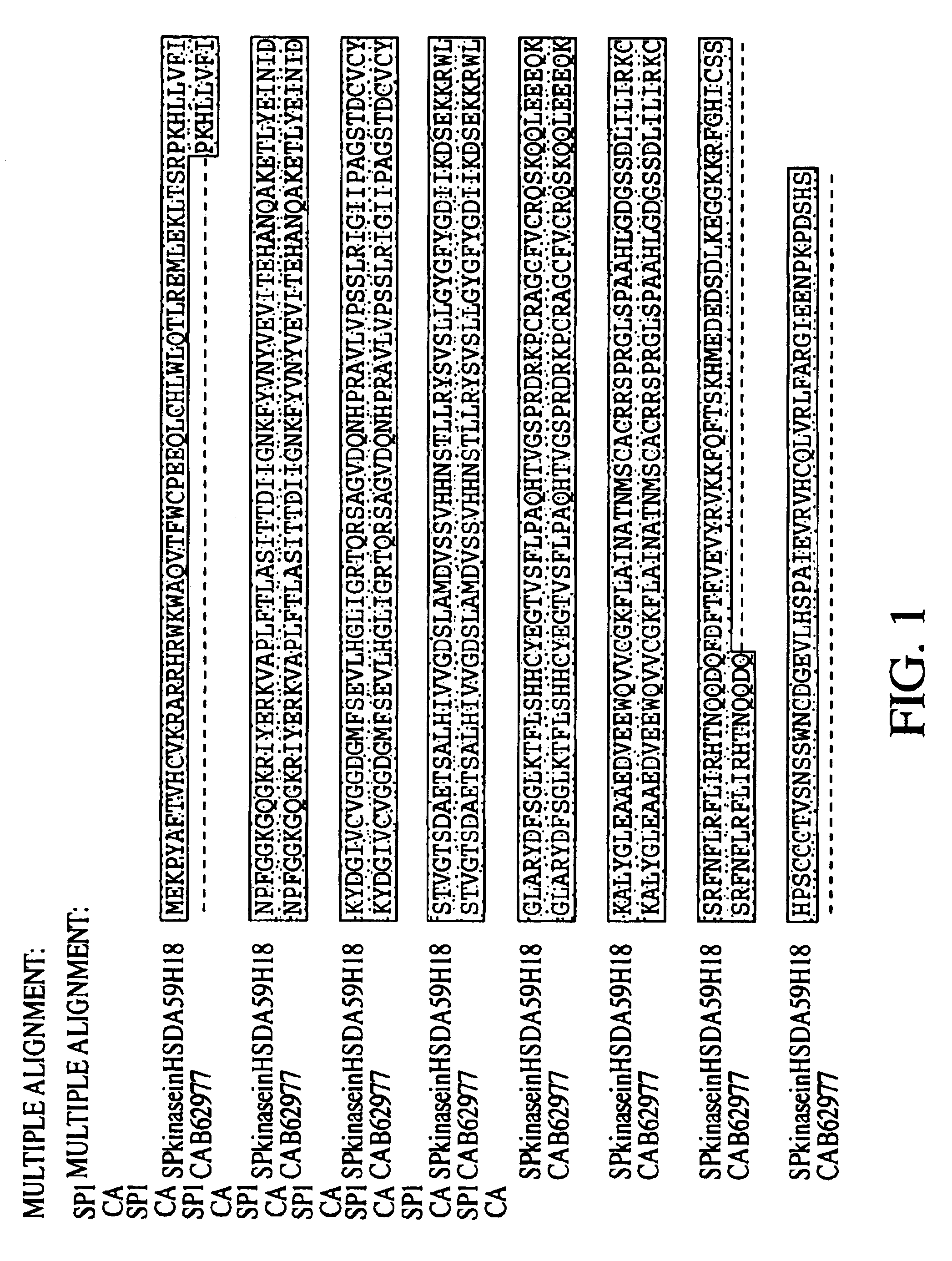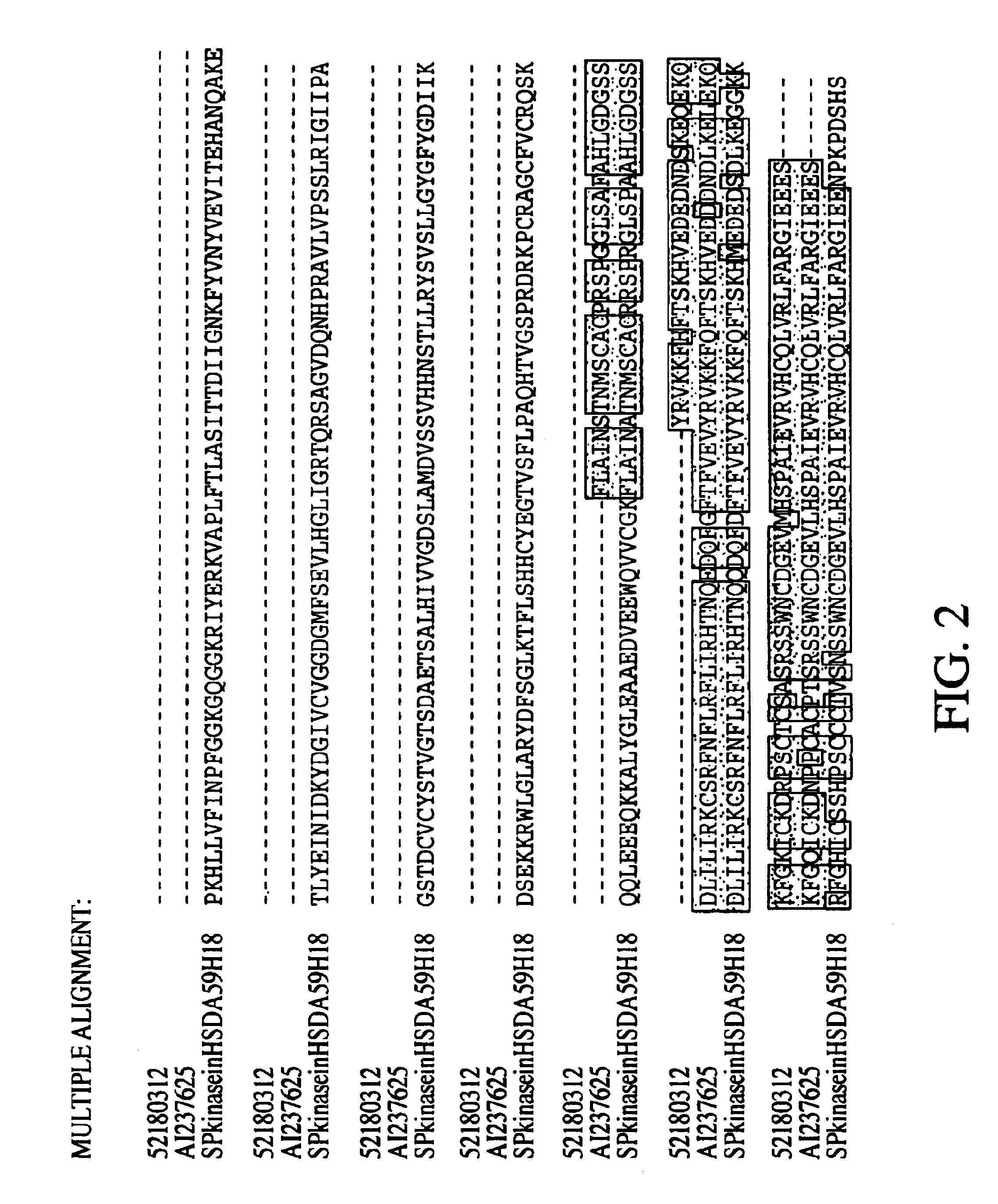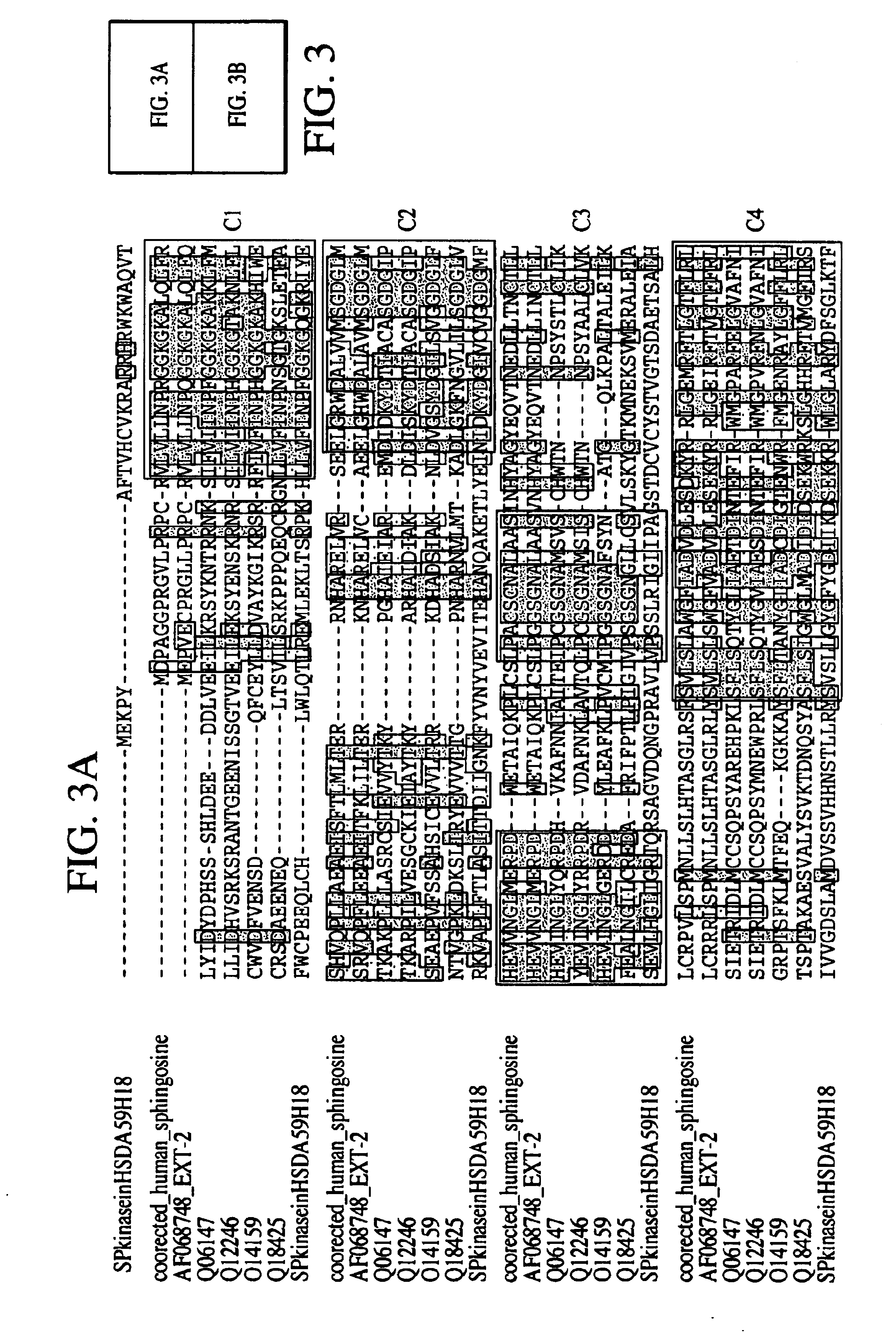Sphingosine kinases
a kinase and sphingosine technology, applied in the field of sphingosine kinases, can solve the problems of no human sequence deposited for this enzyme in genbank or geneseq, and no conclusive data on the start of the mouse protein
- Summary
- Abstract
- Description
- Claims
- Application Information
AI Technical Summary
Benefits of technology
Problems solved by technology
Method used
Image
Examples
example 1
Human Ortholog of Mouse AF068748
[0313]The inventor was able to piece together a homolog of the mouse SphK described in Kohama et al. (Kohama T, Olivera A, Edsall L, Nagiec M M, Dickson R, Spiegel S. “Molecular cloning and functional characterization of murine SphK”. J Biol Chem. Sep. 11, 1998;273(37):23722-8). Kohama et al. did not have conclusive data on where the mouse protein starts, even though they showed that the mouse cDNAs they obtained has SphKinase activity in vivo. However, no human sequence has been deposited for this enzyme in GenBank or Geneseq. In their paper, the authors have an aligment that shows part of a hypothetical human sequence. Here, the inventor obtained a virtual full-length human sequence with Kozak consensus.
[0314]Having the full-length human sequence permitted the inventor to establish where the start of the mouse protein occurs. The mouse homolog produced contains all the conserved regions the authors described in the paper.
[0315]Human SphK (Ortholog o...
example 2
Novel SphK
[0318]A novel gene fragment was differentially expressed using collagen gels at 24 hrs as compared to 4 hrs. AL096766 in HTG database Homo sapiens from clone 59H18 on chromosome 22 splicing 64154-64003, 63017-62954, 59856-59711, 53578-53504, 51333-51181, 47183-47078, 45371-45295, 43645-43440, 42070-41860, 39078-38779, 37032-36151. In this clone there is a putative gene fragment annotated as dA59H18.2 (novel protein similar to human, mouse, yeast, worm and plant (predicted) proteins) created by splicing together 43440 . . . 43645, 45295 . . . 45371, 47078 . . . 47183, 51181 . . . 51333, 53504 . . . 53578, 59711 . . . 59856, 62954 . . . 63017, 64003 . . . >64154). The isolation d010-107.9 (see Example 1) enabled the extension of the gene in the 3′ region, adding 93aa residues. In Seqcalling, the inventor assembled 85336019 (covers bases 915 to 1491 and 1800 to end), 84585492 (bases 360 to 960) and 80432911 that encodes for the 5′ region and start codon. The cDNA was construc...
PUM
| Property | Measurement | Unit |
|---|---|---|
| Tm | aaaaa | aaaaa |
| temperature | aaaaa | aaaaa |
| temperature | aaaaa | aaaaa |
Abstract
Description
Claims
Application Information
 Login to View More
Login to View More - R&D
- Intellectual Property
- Life Sciences
- Materials
- Tech Scout
- Unparalleled Data Quality
- Higher Quality Content
- 60% Fewer Hallucinations
Browse by: Latest US Patents, China's latest patents, Technical Efficacy Thesaurus, Application Domain, Technology Topic, Popular Technical Reports.
© 2025 PatSnap. All rights reserved.Legal|Privacy policy|Modern Slavery Act Transparency Statement|Sitemap|About US| Contact US: help@patsnap.com



